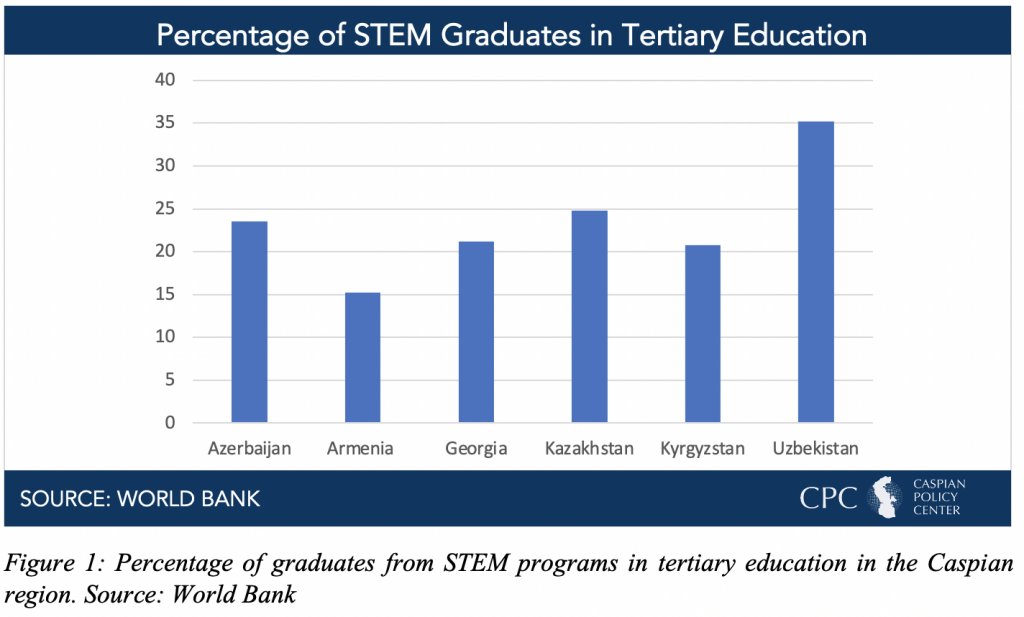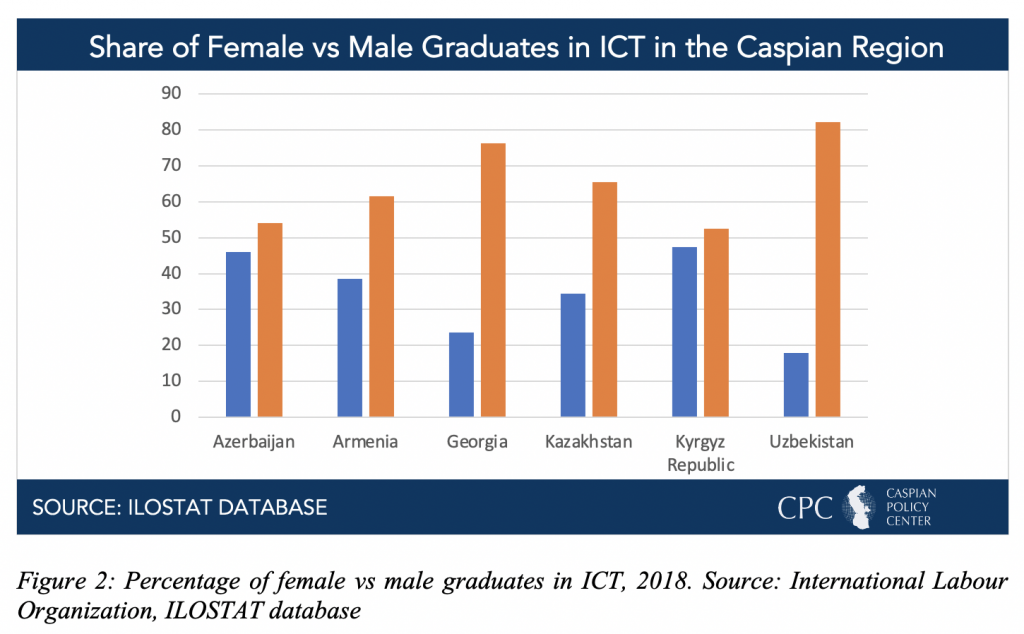STEM Education in Central Asia a Key Measure for Building a Resilient Future
Recent Articles
Author: Aizhan Abilgazina
12/28/2020
While there are few sectors that has not been adversely affected by the COVID-19 virus, the ongoing pandemic has also presented new opportunities by underscoring the importance of technology-driven economic models and the need to invest in Science, Technology, Engineering, and Mathematics (STEM) education. According to the Executive Director and CEO of ABET, a global accreditor in STEM disciplines, Michael Milligan, STEM is critical in generating effective solutions to tackle a wide range of societal challenges, including the current health crisis. Increased engagement in STEM education will be an integral part of the post-COVID recovery and will be crucial in ensuring future economic durability. As Milligan notes, investing in and promoting STEM education also plays a crucial role in reaching the Sustainable Development Goals (SDGs).
Promoting STEM education in the Caspian region is especially important given a relatively low level of student participation in these fields. Figure 1 shows that while Uzbekistan had around 35 percent of graduates in STEM disciplines in 2018, these numbers are significantly lower in other countries in the region. For example, in Armenia only 15 percent of all graduates pursue degrees in STEM subjects. To meet the growing demand for science and technology-driven occupations that will be especially critical for a post-pandemic recovery, governments should increase their investments in STEM education at all levels in order to attract more students into the field.


While there a need to encourage STEM education in general, it is particularly important to draw more women into the field. As Figure 2 illustrates, the share of female graduates in Information and Communications Technology (ICT), which is a key part of STEM, is substantially less than the percentage of male graduates, with Uzbekistan having the largest gender gap in this regard. This disproportionate participation in STEM subjects also translates into lower participation of women in science and technology related jobs, which further reduces their representation in the decision-making positions in a high-growth and high-income sector. Gender gaps in STEM can be attributed to several factors, including sociocultural stereotypes on what jobs are suitable occupations for women, as well as the gender-sensitive policies in education.
Recent years saw an increase in the number of projects and initiatives aimed at promoting STEM education, especially among women, in Central Asia. The United Nations Educational, Scientific and Cultural Organization’s (UNESCO) office in Almaty, Kazakhstan, has launched a new project to increase girls’ participation in STEM industries and promote their engagement in scientific research. UNESCO, together with the Islamic Development Bank (IsDB), has also committed to review Uzbekistan’s Science, Technology, and Innovation system to identify key areas for investment and provide policy recommendations. They also organized a workshop to promote technology-driven solutions and ideas not only in education but across a range of sectors, including energy, agriculture, health, and finance. During the Women in Tech and Science Week in Uzbekistan in 2019, where participants developed mobile app ideas and conducted experiments in robotics, Google Design Strategist Zoe Schladow noted that STEM will dominate the future market and emphasized the need for students to develop necessary skills.
The U.S. has also committed to promoting STEM education in Central Asia. Among its multiple programs to increase students’ participation in science and technology has been the launching of an annual technology camp for girlsfrom Kazakhstan, Kyrgyzstan, Tajikistan, and Uzbekistan at Virginia Polytechnic Institute and State University . The program gives participants the opportunity to learn coding, cyber security, and programming languages, while also visiting tech companies in Washington, D.C.
One of the latest U.S. initiatives for promoting STEM education in Central Asia is the Makerspace project at American Spaces. The project seeks to advance participants’ skills in Science, Technology, Engineering, Arts, and Mathematics (STEAM) through interactive and creative learning. The Makerspace provides access to 3D printers, science kits, and electronics and allows students to gain hands-on experience through experiments and workshops. In November 2020, the first public-private partnership was signed between Chevron and the U.S. mission to Kazakhstan to set up the “Makerspace Expands” program that will increase people’s access to STEM resources, new tech workshops, and connect students with local mentors. Assistant Secretary of State Marie Royce noted that the main purpose of the project is to highlight the importance of STEM education and equip young people with necessary skills to develop technology-driven solutions to global challenges we are facing today.
With STEM careers poised to capitalize on the disruptions caused by COVID-19 and likely to play a key role in ensuring a post-pandemic recovery, it is crucial to draw more people into the field. This is especially critical for the Caspian region that is characterized by a low level of students’ engagement in STEM. Governments should equally prioritize bridging the gender divide and attracting more women in STEM through gender-sensitive policies in education, training, and workshops. While countries in the Caspian region, with assistance from international organizations, have already launched a range of different projects, initiatives, and programs that facilitate the exchange of experiences in STEM and provide access to relevant resources, the long-term goal of increasing students’ share in STEM disciplines requires greater government investment and more educational opportunities, including scholarships and exchange programs.